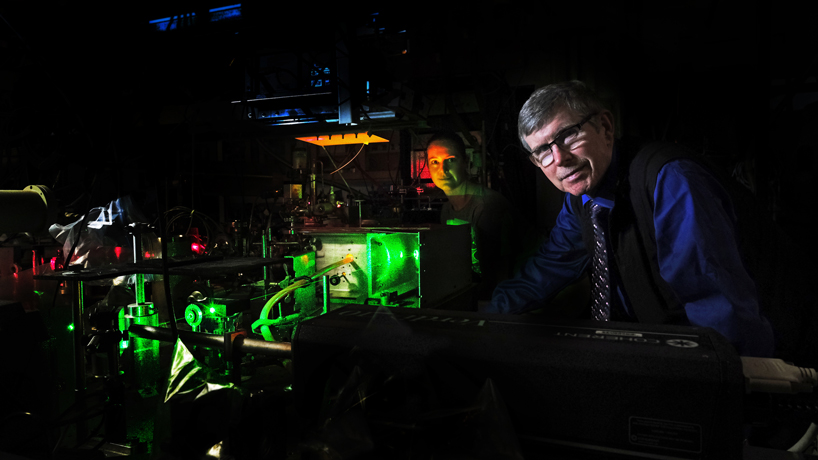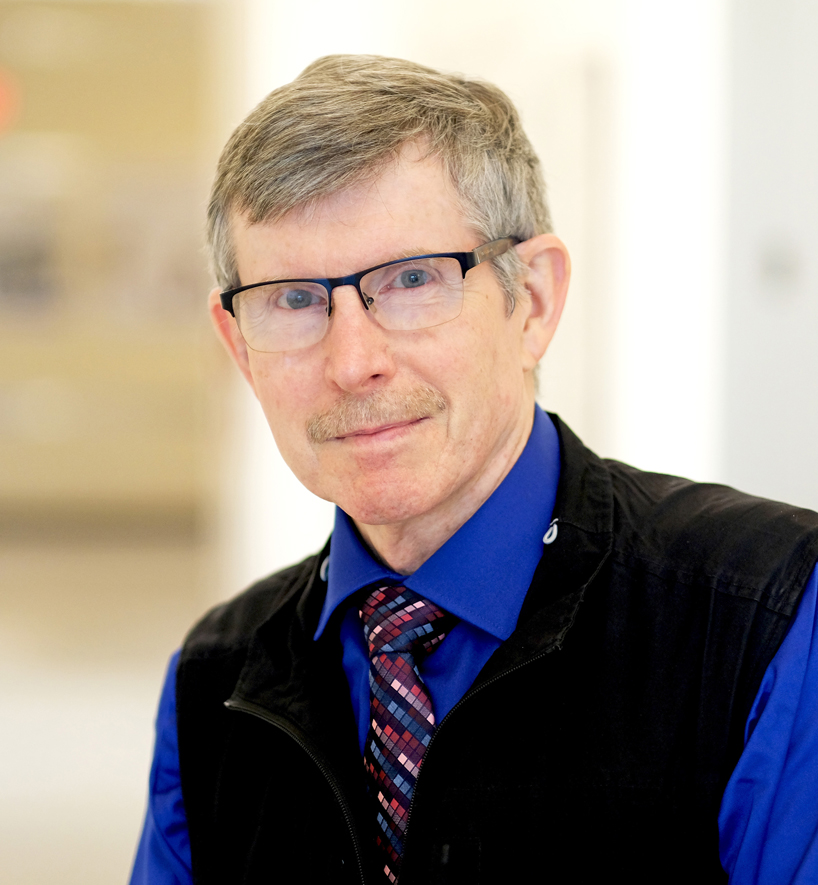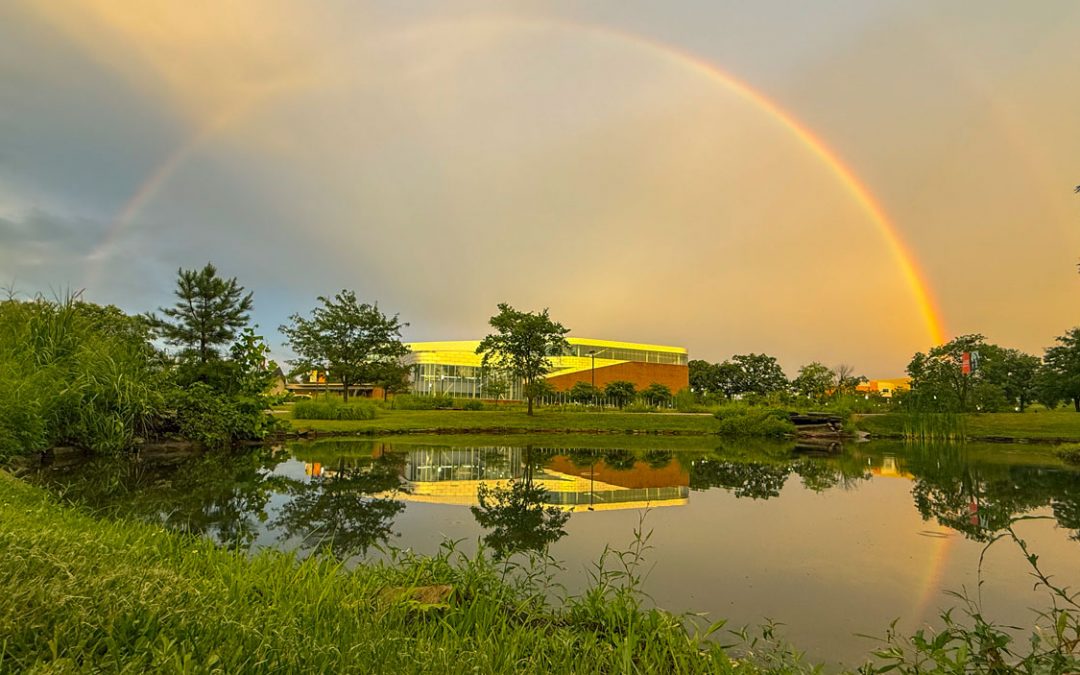
Chemistry Professor Jim O’Brien and graduate research assistant Kristin Bales work in O’Brien’s lab conducting an experiment using intracavity laser absorption spectroscopy. (Photos by August Jennewein)
James O’Brien was aware his name had been included on a list of candidates the St. Louis Section of the American Chemical Society submitted to the governing body for consideration to be part of the 2019 class of ACS Fellows.
O’Brien, a professor of chemistry at the University of Missouri–St. Louis, had also been told not to get his hopes up, that few people are named fellows the first time they’re nominated.
When he saw the thin envelope arrive from the ACS over the summer, he assumed someone was politely letting him know he hadn’t made the cut.
“I actually glanced at the page, and it sort of said, ‘Congratulations,’” O’Brien recalled. “I said, ‘What the heck?’”
James O’Brien was one of 70 scientists selected to be part of the 2019 class of American Chemical Society Fellows. Fewer than 1,200 scientists have been honored since the program began in 2008.
In fact, that one-page letter was to let him know that he was one of 70 scientists across the country who had been selected to join the prestigious ranks.
Fewer than 1,200 have been so chosen since the ACS Fellows program began in 2008 as a way to recognize and honor ACS members for outstanding achievements in and contributions to science, the profession and the ACS.
O’Brien felt honored after being associated with the ACS for nearly four decades, starting with his days as a postdoctoral fellow at the University of California, Berkeley and later the University of Arizona before coming to UMSL in 1989. He was the chair of the St. Louis Section in 2014 and has also been a longtime coordinator of the ACS’ Midwest Award and the St. Louis Section’s Chemistry Career Days.
He is the third member of UMSL’s Department of Chemistry and Biochemistry to be recognized, joining Professor Emeritus Lawrence Barton and Professor and Department Chair Keith Stine, who were chosen in 2012 and 2014 respectively. His wife and frequent collaborator, Leah O’Brien, the chair of the Department of Chemistry at Southern Illinois University Edwardsville, is also an ACS Fellow, having been honored in 2012.
James O’Brien, who grew up in Australia, specializes in fundamental and applied high-resolution laser spectroscopy and gas phase analytical chemistry. It explores the interaction between matter and different portions of the electromagnetic spectrum, whether they’re absorbed, reflected or refracted, and what impact that has on the matter.
O’Brien first became interested in the work as an undergraduate at James Cook University and later Australian National University, where he received his PhD.
“When I first got an inkling that I liked spectroscopy, the fact that we could see the see this nice, clean spectra associated with it was what got me hooked,” he said. “I think I was associated with setting up the first type of apparatus in Australia for this sort of work.”
He’s built far more sophisticated tools over his tenure at UMSL. The bulk of his work uses intracavity laser absorption spectroscopy, which places gas molecules inside the laser cavity and measures the effects induced by the absorption of laser light.
The subsequent analysis reveals a lot of information about the molecule, including its bonding and molecular orbitals – mathematical functions describing the wave-like behavior of an electron in a molecule.
“I’ve said to people that we probably have the best apparatus in the world for doing this,” O’Brien said. “I don’t want to sound like I’m bragging, but that’s absolutely the correct case. We now have a beautiful setup, so the spectra can be observed with much finer detail, and that enables an even better and more detailed analysis to occur.”
O’Brien has conducted research on a host of diatomic molecules. He’s published more than 70 papers, and he and his students have presented more than 100 papers at scientific meetings.
He has received sustained external research funding, including four grants from NASA as part of its planetary atmospheres program, six from the National Science Foundation, two from the National Institute of Standards and Technology and one from Monsanto. He’s also mentored six postdoctoral students, 11 research students and 35 high school students through his involvement with the Students and Teachers as Research Scientists Program.















